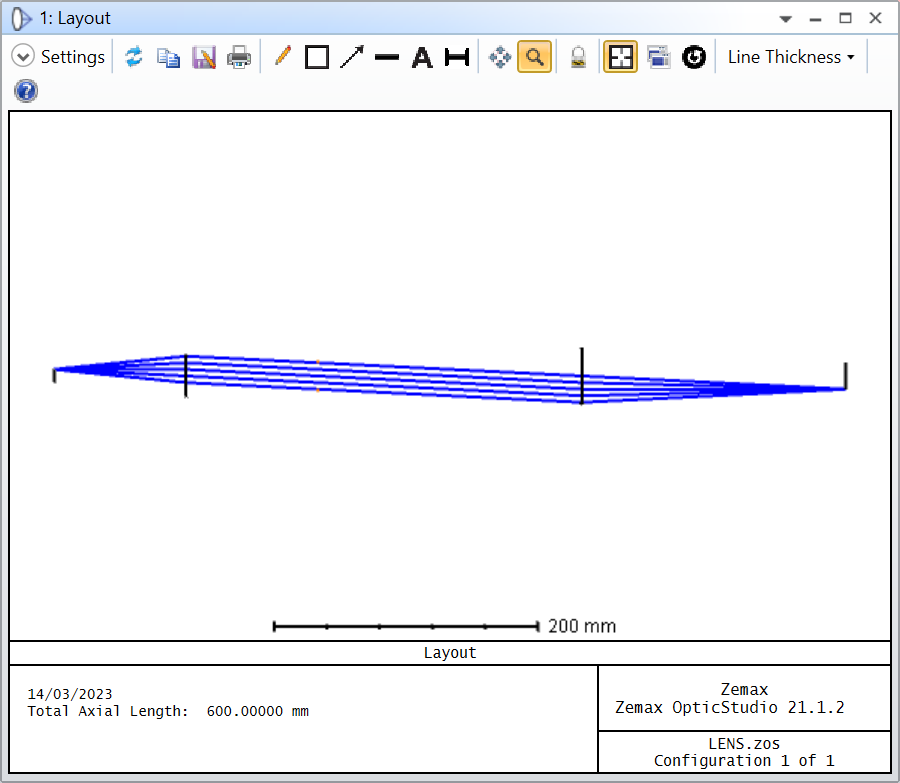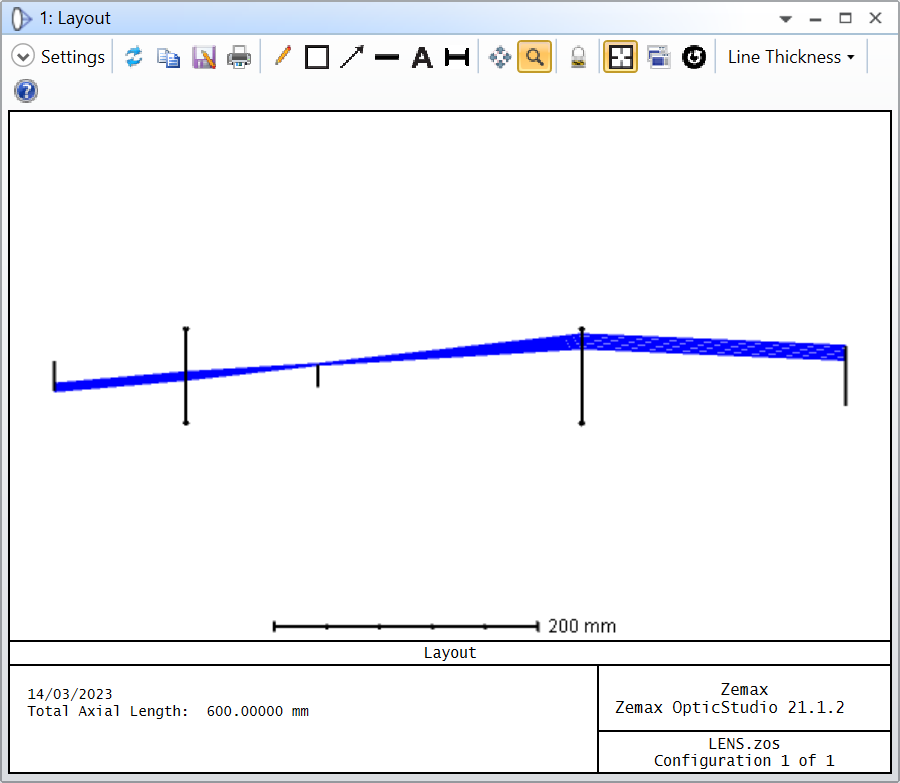Suppose I’ve designed an optical system in zemax, how can I find the linear and angular magnification of the system.
Hi smax,
I’d suggest using the Merit Function. In the Merit Function, you’ll find two operands PMAG (paraxial magnification) and AMAG (angular magnification). The Help File (F1) for those operands reads:
| AMAG | Angular magnification. This is the ratio of the image to object space paraxial chief ray angles at the wavelength defined by Wave. Not valid for non-paraxial systems. |
| PMAG | Paraxial magnification. This is the ratio of the paraxial chief ray height on the paraxial image surface to the object height at the wavelength defined by Wave. Only useful for finite conjugate systems. Note the paraxial image surface is used even if the system is not at paraxial focus. |
You can also calculate the real magnification using ray operands. For example, REAY returns a real (non-paraxial) ray Y-coordinate at a particular surface, if you calculate REAY at two surfaces for an off-axis chief ray and use operand DIVI to calculate the ratio of the two, this will give you the magnification. Similarly you can use RAID, which returns the ray angle of incidence in degrees at a particular surface, to compute the angular magnification.
For example, in that simple telescope (two paraxial lenses, 100-mm focal length on the left, and 200-mm focal length on the right):

The Merit Function gives:

The first REAY operand is the off-axis chief ray (Hy = 1.0, Hx = Px = Py = 0.0) Y-coordinate (or height) in the image plane (on the right-hand side), and the second operand is the same ray in the object plane (on the left-hand side). DIVI takes the ratio image height over object height and returns -2X, which makes sense because for such a telescope the magnification is minus the ratio of the focal lengths (-200/100 = -2).
The same can be done with the angular magnification in the same telescope:


As you increase the field angle, you see the real angular magnification value: 0.5001X departing from the paraxial one: 0.5X.
Does it make sense? If you have an example in mind we help you setup the Merit Function if that is not clear.
Take care,
David
Reply
Enter your username or e-mail address. We'll send you an e-mail with instructions to reset your password.



